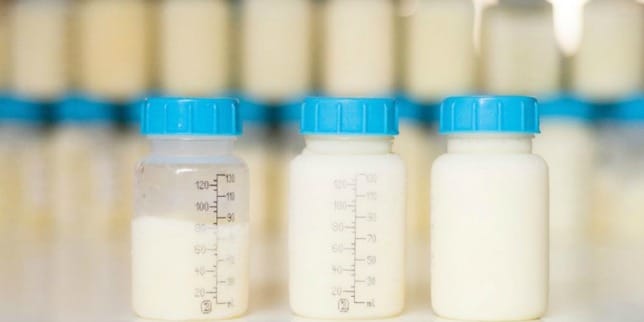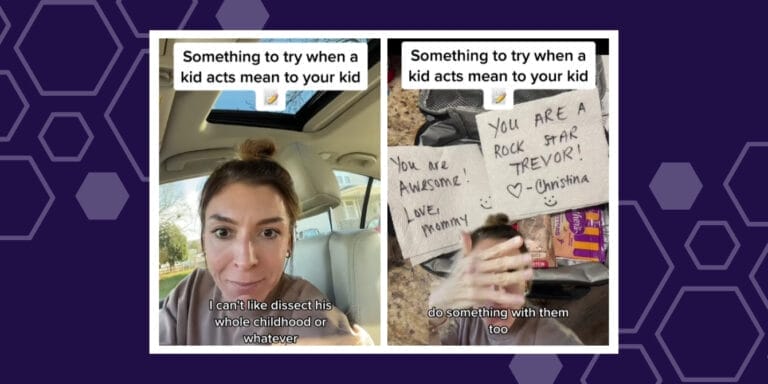Flying As a Pumping Mom

4 tips to make pumping while flying a breeze.
Flying with baby while breastfeeding is a wonderful adventure. Traveling without baby and having to pump to keep your milk supply is a whole other story. I know. I’ve been there, and there, and back again.
For the first year and a half of my son’s life, I was a working-nursing-traveling mom, jetting back and forth from Maine to Northern California every six weeks for work. Sometimes, I was lucky enough to bring the baby; but for the most part, I was not. That left me frequently navigating complex pumping logistics and an emotional rollercoaster. I pumped in airport bathrooms, between businessmen at 40,000 feet, and in a quiet corner at a Jetblue gate. I sweated through security with fresh and frozen milk (and milk somewhere in between). I figured out how to “pack for pumping” and discovered just how crucial it is to plan ahead.
Flying while pumping may be much more complicated than your usual trip, but it can be done. All it takes is a little preparation and a lot of deep breaths. Here are 5 steps to pump on the fly and make your trip easy, even with milk and a breast pump in tow.
1. Make a Detailed Itinerary.
Before you go, map out your travel timeline — from the moment you leave the house until you walk into your hotel or destination — in a calendar app or on paper. Note travel times to and from the airport, time in flight, and length of time between connecting flights. Then think about how often your baby usually feeds. This will help you ‘schedule’ your pump times accordingly and adjust for convenience. For example, you can feed before leaving the house, pump right before boarding the plane or right after, and so on. Finally, know the plan ahead of time and consider setting alarms on your phone or watch for even more ease.
2. Make Access Your Main Priority.
Pack – and dress! – for easy access. Wear a top that’s simple to pump in (think buttons and loose necks) and bring a big scarf. It’s also smart to pack a nursing cover and hands-free pumping bra.
Keep your breast pump handy. Invest in a nice pump bag to use as your carry-on or pack the pump last in your suitcase, positioning it near the zipper opening. Also pack your cooler bag, bottles of milk (full, or empty but ready to go as if they were full), and ice in a place that’s easy to get to when you go through security and are ready to pump. If you can, bring a hand pump or power source backup just in case, and put a few extra breast milk freezer bags in your carry-on so you can slip your bottles of milk inside right after you pump. (It will help prevent spills and maybe save some of your milk if it does spill in flight.)
3. Make it Easy Through Security.
Print out the TSA guidelines for traveling with breastmilk and put them in with your pump. You are allowed to carry more than 3.4 ounces of breastmilk, you just have to notify a security agent and take the milk out to be screened by x-ray. Let the agents know if you have ice with your milk (or ice for milk you’ll pump on the plane). Since anything slushy may require additional screening, opt for frozen peas instead of gel packs if the flight is short.
If you are traveling with a larger amount of milk or have a very long flight, pack your milk in dry ice. Dry ice is allowed up to 5 pounds in a non-sealed container that is labeled with ‘Dry Ice’ and the weight on the outside. If you need help, don’t hesitate to talk to the TSA agents when you get in line.
4. Make Yourself Familiar With the Airport.
Once you’ve made it through security and are waiting to board, it’s a good time to pump. It’s much easier in the airport than on the plane and you are less likely to stress if you experience delays once on board.
Look for a Mothering Room or Nursery on the airport map, or download the pumpspotting app to see what other moms recommend as a place to pump. If there is no dedicated room, look for a Mamava Pod, ask to use an Airport Lounge, or seek a vacant family restroom. In a pinch, look for a quiet gate with an outlet and use your nursing cover. Return your milk to the ice.
5. Make Friends With the Flight Attendants
Having a little support from the crew can really make your pumping experience a whole lot better. When it’s time to pump, a flight attendant can guide you to a vacant seat in the back row or to a space where you might have a little more privacy. He or she can also provide you with ice should you need it. If you have to pump in a seat, pull out your nursing cover or scarf and play some relaxing music. If your only option is the bathroom, put a sign on the door or let your new friend, the attendant, know you’ll be pumping and ask for them to keep the line at ease so you can try not to stress while in the act.
Every trip is different and just like breastfeeding – and air travel – you might hit a few bumps, but if you take a moment to prepare and think through the trip, you’ll have a greater chance of pumping with ease.
Happy travels!


































